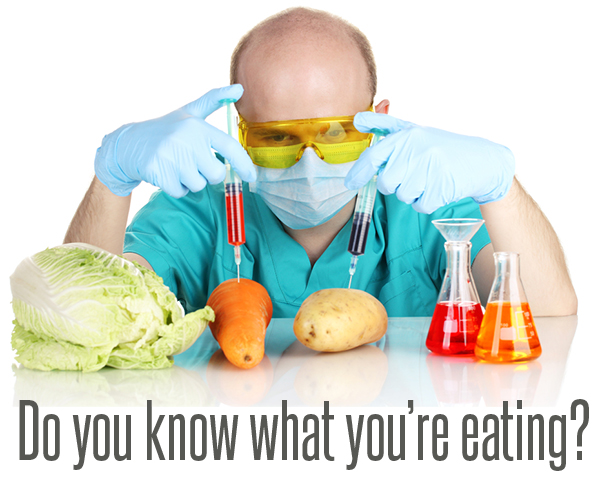Patrick Di Justo, author of “This is What You Just Put in Your Mouth” took to reddit last week to answer readers’ questions about the very same topic.
Di Justo wrote a column in everyone’s favorite science publication, Wired magazine, where he broke down the ingredients in common household products, explaining just what those unpronounceable ingredients really are, why they are used, and just where they come from.
“All my research is dedicated to pointing out what is in the food you eat and the products you use. I almost never make value judgments about these ingredients — the idea is that you now have all this information, you make your own decisions,” explained Di Justo to one reader. “I think the only thing I’ve ever told people to stay away from was heroin, because heroin is pure evil in powdered form. And high fructose corn syrup, which is not as immediately evil as heroin, but still bad for you.”
When Wired magazine got its own show on PBS, called Wired Science, host Chris Hardwick presented Di Justo’s articles as a special segment of the show. The very first food he broke down? Cool Whip.
Cool Whip
Before you dollop this unassuming, fluffy, sweet treat on your fruit salad, let’s find out exactly what’s in it:
First off, it’s bleeding you dry: water is Cool Whip’s main ingredient, since air can’t really be put on an ingredient list. Water and air make up forty-one cents per ounce, just over twice what it would cost to whip real cream yourself.
Cool Whip contains both corn syrup and high fructose corn syrup, which, again, is the only ingredient Di Justo would tell you to stay far away from. “There is absolutely no reason for it to exist,” he explained, “other than as a way to use up surplus corn. As far as I can see it has zero redeeming factors.” To have two artificial sweeteners seems like overkill, and we mean that in the most literal sense.
Polysorbate 60 is also on the label. Polysorbates are made by polymerizing ethylene oxide (which, fun fact, is a precursor to antifreeze) with a sugar alcohol derivative. Through the wonders of science, this can produce either a detergent, an emulsifier, or, in the case of polysorbate 60, a major ingredient in Cool Whip, as well as some sexual lubricants.
Sorbitan Monostearate is one of the chemicals that keeps Cool Whip from turning to liquid over time. Chemists call it synthetic wax, and it’s sometimes used as a hemorrhoid cream.
What else do you eat on a daily basis? Check the labels for these suckers:
Chewing gum is made of styrene-butadiene, an artificial rubber that is also used in automobile tires. NASCAR fans may be familiar with the term “gumballs” when referring to tires, and yes, that’s exactly where it came from.
Castoreum comes from beaver sperm. As in, the sperm of real beavers. The process involves knocking them out and milking the anal gland, or the castor gland. And then they add this right into your perfume, cigarettes, some vanilla ice creams, hard candies, and baked goods.
Taurine, a common ingredient in energy drinks, an organic acid first extracted from bull bile. Perhaps that’s where Red Bull got it’s monicker?
The Eggnog Debate
It’s no secret that ingredient lists are regulated, and while companies can’t straight out lie, the legislation set in place can leave big loopholes. “You can trust ingredient labels to tell you exactly what they are required to tell you and not one single data bit more. So while natural flavors must be found in nature, ‘artificial flavoring’ could be literally anything that’s not overtly poisonous,” explains Di Justo of the confusing rules of ingredient labels. Take eggnog for example.
“Back in 1981, the FDA put forth the prohibition on yellow food coloring in eggnog,” Di Justo begins the tale. “In 1982, the eggnog manufacturers rose up in protest. ‘The public demands yellow eggnog,’ they claimed. ‘Not using yellow food coloring would put us at a disadvantage!'”
The FDA’s definition for eggnog said that eggnog may not contain any sort of yellow food coloring because it would make the public think that there were more eggs in the nog than there were.
Yet, if you go to the store and look at commercial eggnog, nearly all of them have some form of yellow food coloring. This caused Di Justo to wonder what sort of loophole exists that would allow this to happen.
“You have to remember that like all laws, these regulations are the ‘frozen prejudices of society’ and made over a number of years.” explained Di Justo. “What the public will accept in 1950 they might not accept in 1970, but will accept again in 2005.”
So the FDA compromised. They said that while the law against yellow coloring would remain on the books, it wouldn’t be enforced until a proper hearing could be held where both sides could present their case.
That was in 1982. The FDA has no records indicating that hearing was ever held.
Also Read:
8 Chemical Food Additives You Should Avoid
Big Food’s Deep Pockets Have Infiltrated the Academy of Nutrition and Dietetics

